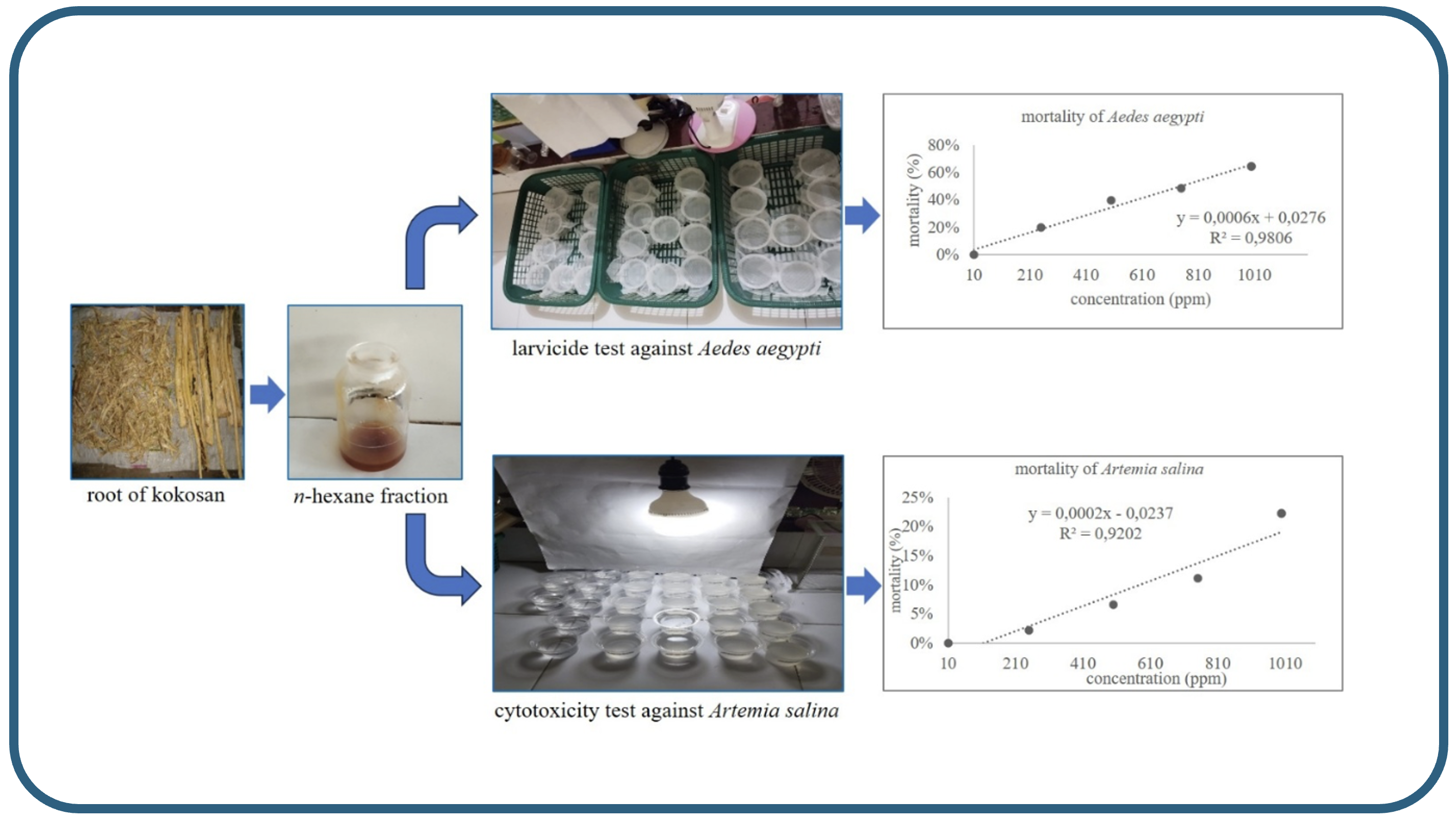Larvacide Activity of n-Hexana Fraction Kokosan Roots (Lansium domesticum Corr var Kokosan) Against Aedes Aegypti
Aktivitas Larvasida Fraksi n-Heksana Akar Kokosan (Lansium domesticum Corr var Kokosan) Terhadap Nyamuk Aedes Aegypti
Abstract
Aedes aegypty is the main vector for transmitting the disease (Dangue Hemorrhagic Fever (DHF). The use of larvicide is one method of vector control. In order to reduce the impact of excessive use of synthetic larvicide, it is necessary to develop a natural larvicide by utilizing the n-hexane fraction of cocosan roots (Lansium domesticum Corr var kokosan). The aim of this study was to determine the larvicidal activity and toxicity of the n-hexane fraction of kokosan roots (Lansium domesticum Corr var kokosan) based on the LC50 value with the probit method. There were nine types of treatment including five concentrations of n-hexane fraction of cocosan roots (10; 250; 500; 750; 1000 ppm) as the treatment group, two positive controls (abate and n-hexane pa), and two negative controls (water and water + tween 80). The larvicidal activity test used 15 third instar Aedes aegypti larvae for each test. Meanwhile, the toxicity test used the BSLT method with 15 Artemia salina larvae in the nauplia phase per test. The number of larval deaths was explained by the LC50 value using the probit method. The results of larvacide activity and toxicity tests were 664,02 ppm and 2795,48 ppm, based on LC50. These results indicate that the n-hexane fraction of kokosan roots has moderate activity and is not toxic.






















